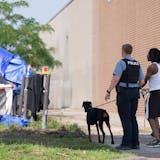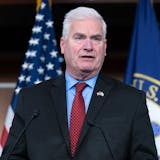When Sarah Stech-Carlson learned the details of Jayme Closs' abduction and escape from her captor, the Plymouth mother immediately told her husband, "We need a home security system."
Closs' horrific story seemed like a tipping point for Stech-Carlson, who felt inundated by news reports and social media updates about children being threatened or harmed. It made her reconsider how much freedom to allow her kids.
"Every little thing ticks away at parents and keeps reminding us that we need to be extra vigilant about what our kids are doing and how we can keep them safe, while giving them independence at the same time," she said.
Much like Jacob Wetterling's 1989 abduction, Closs' case has caused some local parents to become more protective. While it's a natural reaction for parents to want to safeguard their children, experts say, they warn that limiting kids' freedom in the hopes of avoiding a rare, heinous act may put them at greater risk of lifelong psychological distress.
It's nearly impossible for parents to not have a visceral fear reaction to incidents like Closs' abduction, said Bill Doherty, professor of family social science at the University of Minnesota.
"The first law of parenting in our minds is: Keep them safe," he said.
And the way our brains process information can exacerbate these hard-wired worries. Mental shortcuts cause us to remember the most sensational incidents, said Lenore Skenazy, author of the book "Free-Range Kids."
As an example, Skenazy said, after learning that Closs' alleged abductor first spotted her at a school bus stop, our brains tend to associate her shocking story with children's safety at bus stops, instead of focusing on the millions of kids who take buses every day without incident.



